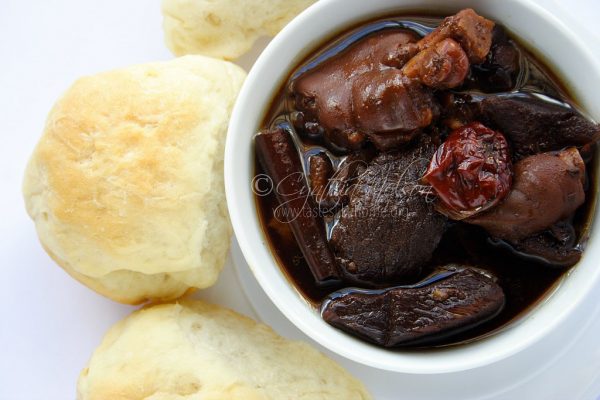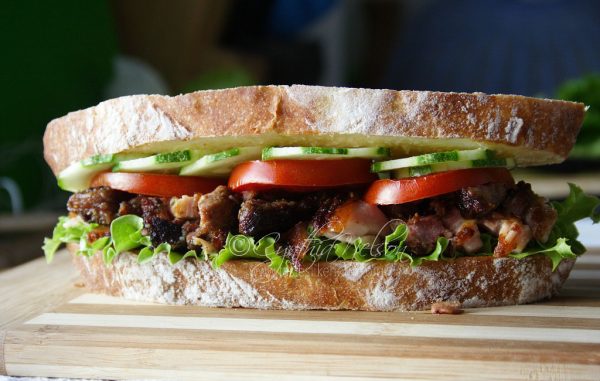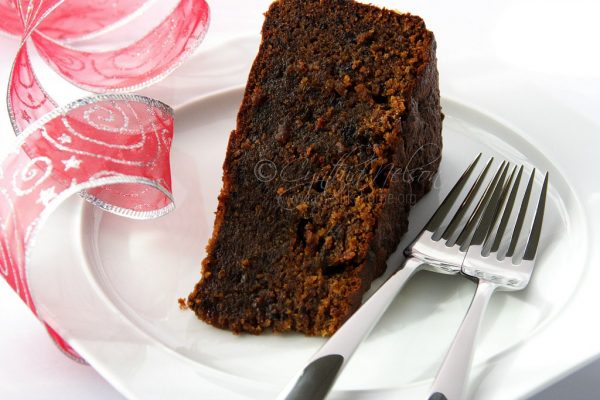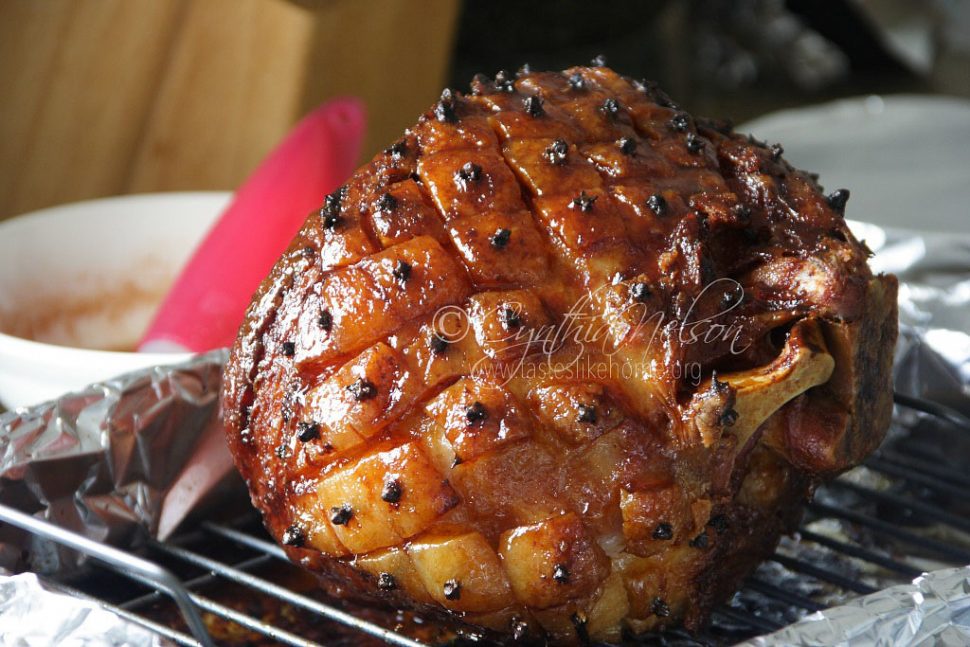What’s Cooking is a series in which I answer questions and share advice about food and cooking that you have but may be too shy to ask.
It is the weekend before the big weekend of preparing and cooking the Christmas meal and I’ve been getting questions and sharing answers with a number of readers about baking ham, cake, making Pepperpot, Garlic Pork and other things related to cooking for the holidays.
To that end, I’ve compiled a list of the most frequently asked questions to share with you, and please feel free to share answers, tips and advice on the Tastes Like Home Facebook and Twitter pages.
HAM
Question: Is ham raw or cooked?
Answer: There are different types of ham and they fall into 3 main categories – raw (aka fresh ham, leg of pork), dry-cured such as prosciutto and Serrano, and wet-cured ham. Dry-cured ham is made by rubbing the meat with lots of salt and spices including sodium nitrate (pink salt) and hanging it to air-dry in a controlled environment anywhere from 6 to 18 months. The meat dehydrates and the flavour concentrates producing an intense, highly-prized flavour. Most dry-cured ham are served sliced wafer thin. Now, the ham most of us get and are mostly interested in at this time of the year for our holiday tables, is the wet-cured ham.
Wet-cured hams are preserved by soaking in a brine or injecting with a brine. A brine is a salt and water solution that can also include sugar, sodium nitrate, liquid smoke and other flavourings. Most, if not all of the wet-cured ham we get here in the Caribbean, whether locally made or not, are fully cooked. The labelling might be different depending on the brand. In some cases, it may simply say, “ready to eat”. What this means is that the ham is already fully cooked; when we ‘bake the ham’ we are essentially reheating the ham.
Question: What is Picnic ham?
Answer: The word ‘ham’ is generally associated with the two back legs of the pig. Picnic ham is made from the shoulder of the pig (the front legs).
Question: How long to reheat/bake the ham?
Answer: That depends on the size the ham. Use the following as a guide – for each pound of ham, cook it for 20 minutes at 325 degrees F. The ham when thoroughly reheated should have an internal temperature of 140 degrees F. If you do not have a meat thermometer, at the end of the cooking time (based on the poundage), cook it for an extra 20 minutes.
Question: Must the rind/skin be removed?
Answer: That is a matter of personal preference. The rind is edible and very delicious when cooked. If you prefer not to remove the rind, simply score the ham just as you would if it had been taken off.
Question: Some recipes suggest adding liquid to the pan when baking the ham, is that necessary? And what is the purpose of putting liquid in the pan?
Answer: No, it is not necessary to add liquid. The reheating or baking of the ham can take place with dry heat (that is without adding any liquid to the pan; actually, that is how I always bake my ham). Or, the ham can be reheated with steam that would come from the liquid placed at the bottom of the pan. In both cases, the ham should be sitting on a rack in the roasting dish.
Question: When to glaze the ham so that it does not look burnt all over?
Answer: Start glazing an hour after the ham has been reheating, after that, brush with a glaze every 15 minutes until the ham is done heating through/cooking.
Question: Can I cut the ham as soon as it comes out of the oven?
Answer: As with all roasts, let the ham rest for about 20 minutes after it is out of the oven so that the juices can redistribute evenly.

PEPPERPOT
Question: Should the meat(s) be seasoned before cooking?
Answer: There is no right or wrong answer to that question because the making of Pepperpot is something that each household makes the way they like or prefer it, or, from tradition. I make my Pepperpot based on what I learnt from my mother – meat, cassareep, sugar, salt, cinnamon, cloves, 1 or 2 big hot peppers (whole), and a knob of ginger, peeled and halved. That’s it. And every time it comes out perfectly. I tend to make Pepperpot at least 3 days before I start eating it, so that the flavour fully develops along with a thick, rich black sauce, bones to suck on and meat that melts in the mouth.
Question: How to taste the Pepperpot to see if it is just right (to suit me)?
Answer: There are certain dishes, and Pepperpot is one of them, that you would taste for seasoning and flavour with the thing you are most going to eat it with, in this case, bread. Therefore, take out a little of the sauce when the Pepperpot is done, dip a piece of bread into it and taste it. If necessary, adjust with whatever you feel is missing and cook for another 20 minutes.
Question: How often to heat up the Pepperpot and for how long?
Answer: I heat up my Pepperpot twice daily, early in the morning when I get up and late in the evening. Bring the pot to a roaring boil, covered, and let cook for 5 minutes then shut off heat.

GARLIC PORK
Question: What strength of vinegar should I use to pickle the pork?
Answer: Most supermarket distilled vinegars are between 4 to 8 % acidic, so using your favourite brand within this range is ideal. Depending on the level of acidity you like for your Garlic Pork, you can use a 1:1 ratio (1-part vinegar to 1-part water or even 1 and ½ parts water). However, if you are using a vinegar of 6 to 8-percent acidic, you can use a 1:2 ratio (1-part vinegar to 2 parts water to 2 and ½ parts water).
Question: What is the best cut of meat for Garlic Pork?
Answer: Boneless shoulder. Have it cut into thick strips or chunks.
Question: How much liquid to cure the Garlic Pork?
Answer: The liquid should cover the meat.

CHRISTMAS CAKE
Question: I used really aged fruits in my cake, should I still add more alcohol after baking?
Answer: That is a personal preference. If you want to add more alcohol, when the cake is removed from the pan and still hot, prick the cake all over the top with a tooth pick or cake tester and drizzle or brush with whatever alcohol with which you plan to ‘feed’ the cake. Do this several times during the first hour of the cake coming out of the oven. The cake will best absorb and distribute the extra moisture when it is still hot/warm rather than cool.
That’s it for this week, this month and this year folks! The Scene and Tastes Like Home will be on holiday until January 12, 2019. However, be sure to check out the Tastes Like Home Face-book page and Twitter feed for recipes, tips and advice. Or, you can inbox me directly at: cynthia@tasteslikehome.org
Have a safe and blessed Holiday season, and a Happy New Year!
Cynthia
cynthia@tasteslikehome@gmail.com






